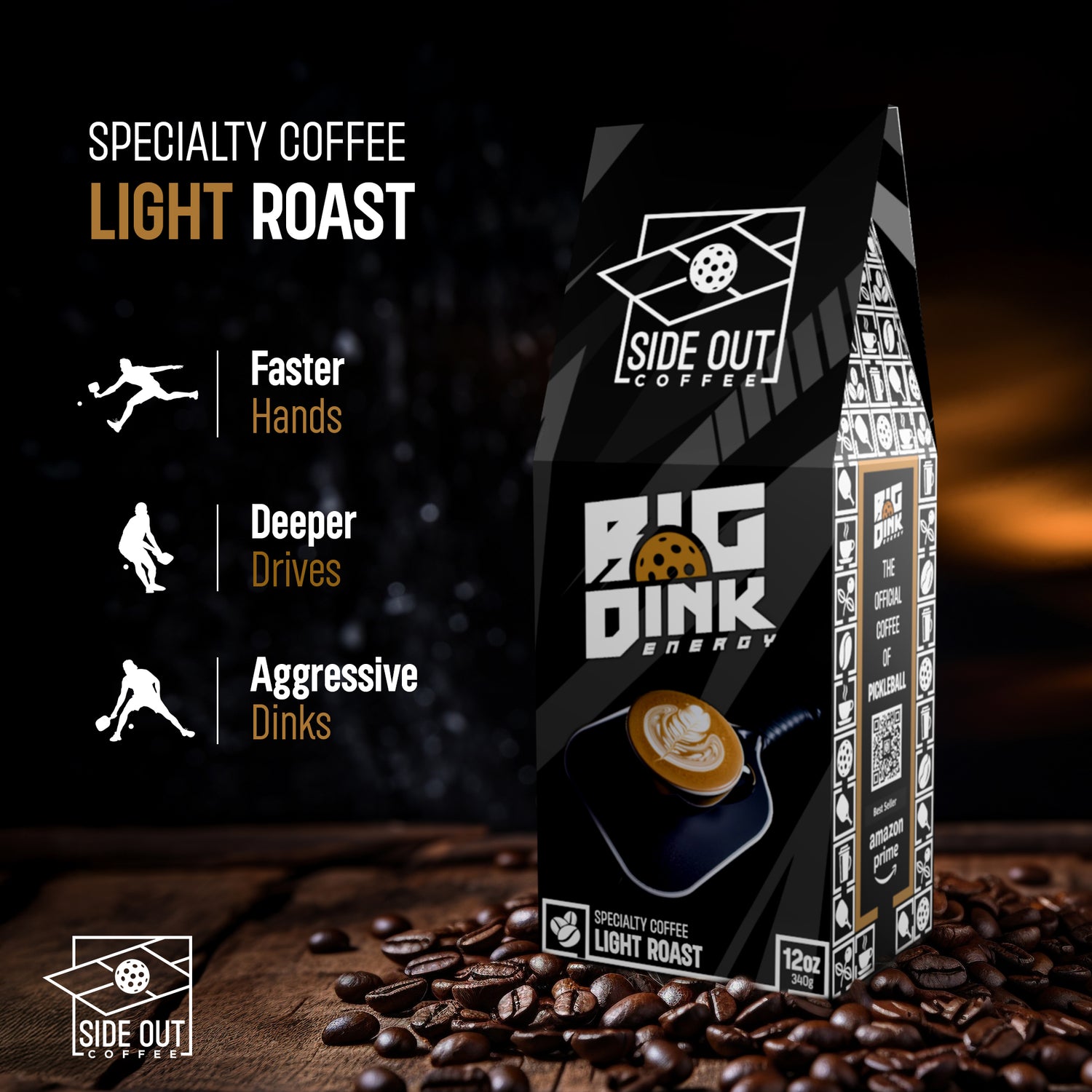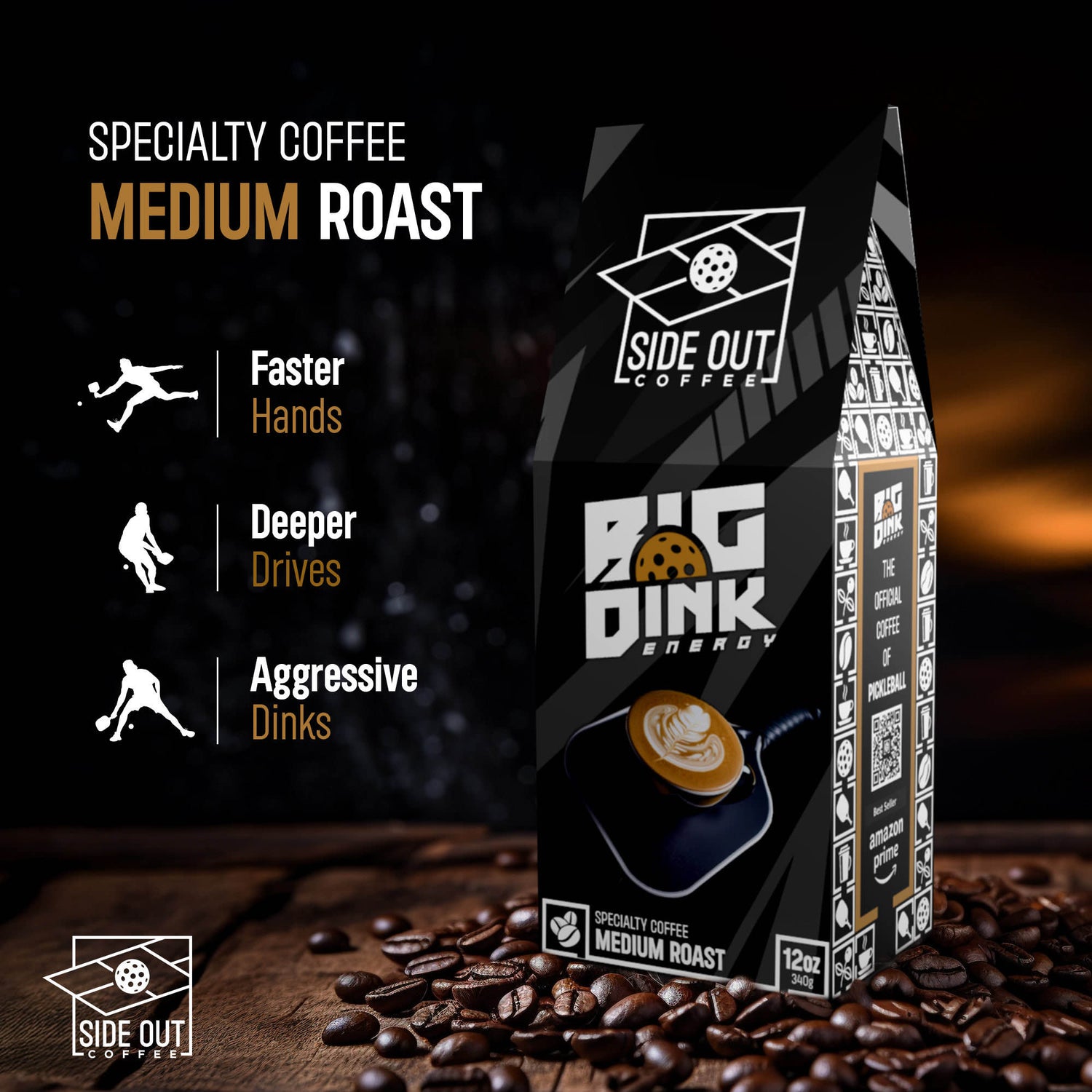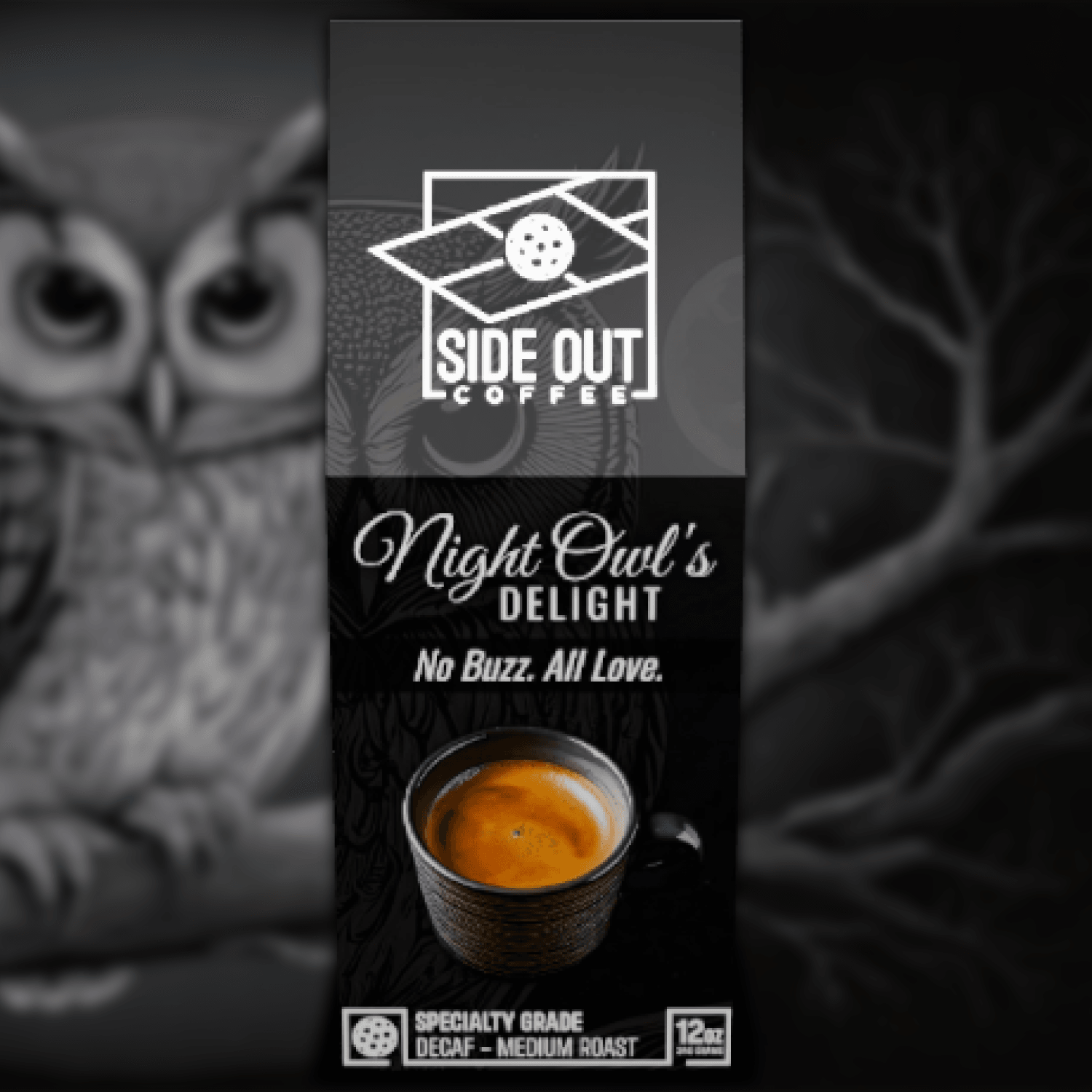Module 16 – The Barista's Toolbox: Equipment and Essentials
Side Out CoffeeShare
Masterclass Lesson: Module 16 – The Barista's Toolbox: Equipment and Essentials
Welcome, coffee connoisseurs and aspiring baristas! 🌟☕ Are you ready to level up your coffee game? Because today, we’re diving deep into the Barista’s Toolbox—that magical collection of tools and equipment that makes every cup of coffee feel like a masterpiece. Whether you’re brewing at home or running a bustling café, having the right tools at your disposal is the secret to unlocking consistently amazing coffee.
Think of this lesson like a coffee gear treasure hunt—we’ll explore everything from grinders to espresso machines, and by the end, you’ll know exactly what you need to brew like a pro, with the perfect equipment to match your style and needs. So, put on your barista apron (yes, even if you're just brewing in your kitchen) and let’s get started! 🚀
1. Essential Tools for Every Barista 🔧☕
Whether you're setting up your coffee corner at home or outfitting a commercial café, there are a few key tools that no self-respecting barista (or coffee enthusiast) can live without. These tools are the backbone of your brewing setup—think of them as your trusty sidekicks in your quest for the perfect cup of coffee.
The Grinder: Your Coffee’s Best Friend 🌀
Let’s talk grinders, baby. You could have the fanciest espresso machine, the best beans, and a milk frother that would make a barista weep with joy, but if your grinder is subpar, you’re in for a rough ride. A good grinder is non-negotiable. It’s the heart and soul of your coffee brewing process.
Why Grinders Matter:
- Coffee grounds directly affect the flavor, consistency, and extraction of your coffee.
- Consistent grind size is crucial for achieving the best possible extraction—whether you're using a French Press, a pour-over, or an espresso machine.
Types of Grinders:
-
Blade Grinders (The Novice’s Toy):
- Pros: They’re affordable and easy to find.
- Cons: They chop coffee beans in an inconsistent way, leading to uneven grind size, which can ruin your coffee’s extraction. Think of it as chopping veggies with a butter knife. Just... don’t.
-
Burr Grinders (The Professional’s Choice):
- Pros: They crush the beans between two burrs, ensuring a consistent grind size. This is the gold standard for home brewing or professional setups.
- Cons: They can be a bit more expensive (but, hey, good things don’t come cheap).
- Flat Burr Grinders: Offer precision and are great for espresso, though they can be a bit noisy.
- Conical Burr Grinders: Quieter and produce less heat, which is great for preserving coffee’s delicate oils and flavors.
Pro Tip: Aim for a grinder with a range of grind settings. For example, a grinder with settings for espresso (fine grind), pour-over (medium grind), and French press (coarse grind) will cover all your needs.
2. Scales: Precision is Everything ⚖️
Now, let’s talk scales. Sure, you might think, “Hey, I’m not baking a cake here.” But trust me, weight matters in coffee brewing. Too much coffee? Your brew will be overpowering. Too little? You’ll end up with a weak, watery mess. Using a scale helps you measure the right coffee-to-water ratio for every method—because precision is key when it comes to making a great cup of coffee.
Why You Need a Scale:
- Consistent Brews: The ratio of coffee to water is vital for the right balance.
- Professional Accuracy: In specialty coffee shops, baristas are weighing everything—the coffee, the water, the milk. It’s like making a perfectly calibrated espresso shot.
Pro Tip: Invest in a digital scale with a timer. This way, you can measure both the weight of your coffee and the brewing time—essential for things like pour-over brewing.
3. Tamper: The Power of the Press 👊
No, we’re not talking about a weird superhero. We’re talking about the tamper, that little tool that presses down the ground coffee in your espresso portafilter. A good tamper will give you the control and even pressure you need to pull the perfect espresso shot.
Why Tampers Matter:
- Even Extraction: Proper tamping ensures an even surface on your puck, which allows water to flow evenly through the coffee grounds during extraction.
- Consistency: Tamping with 30 pounds of pressure (about the same as a medium weight dumbbell) helps create the same results every time.
Types of Tampers:
- Flat Base Tamper: Most common, offers an even press on the coffee.
- Convex Base Tamper: Has a curved base that presses the coffee more in the center, which some people prefer for certain espresso machines.
Pro Tip: Make sure your tamper’s size matches the portafilter diameter. If the tamper’s too small or too big, it won’t work properly, and you’ll be left wondering why your espresso tastes like burnt rubber.
4. Milk Frother: The Froth of the Gods 🥛☁️
For those of us who love a creamy, velvety cup of cappuccino, latte, or flat white, a milk frother is essential. Frothing milk isn’t just about making your coffee look pretty (though, let’s be honest, it does). It’s about creating that smooth texture and microfoam that makes every sip feel like a hug from the inside.
Why Milk Frothers Matter:
- Steam Wand (in Espresso Machines): Creates textured microfoam. Ideal for latte art.
- Standalone Frother (Electric or Manual): Perfect for those who aren’t looking to invest in a full espresso machine but want the benefits of frothy milk.
- Handheld Milk Frother: Portable and easy to use; great for people who just want to froth some milk quickly without much hassle.
Pro Tip: For the perfect froth, aim for whole milk or non-dairy alternatives with higher fat content (like oat milk) for a smooth, creamy result. If your froth is a little “airy,” you might be frothing at the wrong temperature—shoot for around 140°F-150°F. Too hot, and your milk will taste burnt. Yuck!
5. Espresso Machines: The Crown Jewel of the Barista’s Toolbox 👑
Ah, the espresso machine—the Cadillac of coffee gear. If you're serious about espresso, this is where the magic happens. Whether you're looking to set up at home or build a professional café, the espresso machine is where you’ll spend the most time and money. And rightly so—it’s the tool that will allow you to pull the perfect espresso shot.
Types of Espresso Machines:
-
Manual Espresso Machines:
- Pros: Full control over every step. You can adjust pressure, flow rate, and brew time for an artisanal experience.
- Cons: Requires practice and patience. These are for serious coffee geeks who want to perfect their craft.
-
Semi-Automatic Espresso Machines:
- Pros: You control the grind, tamping, and dosing, but the machine handles the rest (like water pressure and timing). A great balance of control and convenience.
- Cons: Still requires skill to pull great shots.
-
Automatic Espresso Machines:
- Pros: The machine does most of the work for you—good for quick, reliable shots with less fuss.
- Cons: Less room for creativity, but they’re excellent for consistency. Great for commercial use.
-
Super-Automatic Espresso Machines:
- Pros: One-touch espresso at the push of a button. Grind, tamp, extract, steam—done. These are for people who love convenience more than they love the ritual.
- Cons: They’re expensive and less customizable.
Pro Tip: When shopping for an espresso machine, look for one with a strong boiler for good temperature control, and a steaming wand for frothing milk. Don’t forget to look at the portafilter size—larger is often better, especially if you're brewing multiple shots.
6. Other Essential Tools to Consider 🔧💡
- Knock Box: The little box where you dispose of your used espresso grounds. It's like a “coffee graveyard,” but with a bit more flair.
- Milk Pitcher: A stainless steel pitcher used for steaming and pouring milk. Get one with a spout for latte art—trust me, it’s a game-changer.
- Coffee Storage Canister: To keep your coffee fresh and safe from oxygen, moisture, and light. Treat your beans like royalty! 👑
How to Choose the Right Equipment for Home or Professional Use 🏠🏢
Choosing the right equipment depends on your
coffee goals and budget. Here’s a quick breakdown:
-
Home Brewing:
- Grinder: Burr grinder (medium price range, reliable).
- Espresso Machine: Semi-automatic or manual for control, but automated for convenience.
- Extras: Milk frother, scale, tamper, and pitcher for a cafe-like experience at home.
-
Professional Use:
- Grinder: Commercial-grade burr grinder with consistent, fast grinding.
- Espresso Machine: Commercial espresso machine with advanced features (temperature control, large boiler).
- Extras: Knock box, multiple milk frothers, scales, and plenty of accessories for a smooth operation.
Conclusion: Unlock Your Barista Potential 🎓☕
Now that you’ve got the full breakdown of the barista essentials, you’re ready to assemble your dream coffee setup! Whether you’re starting small with a home brewing kit or going all out with a professional espresso machine, the tools you choose will directly influence the quality of your coffee. And remember: the best tool is the one that helps you brew with passion and creativity.
So, what are you waiting for? It’s time to build your coffee kingdom, one tool at a time! Happy brewing, and may your coffee always be strong and your shots perfect. ☕💪



